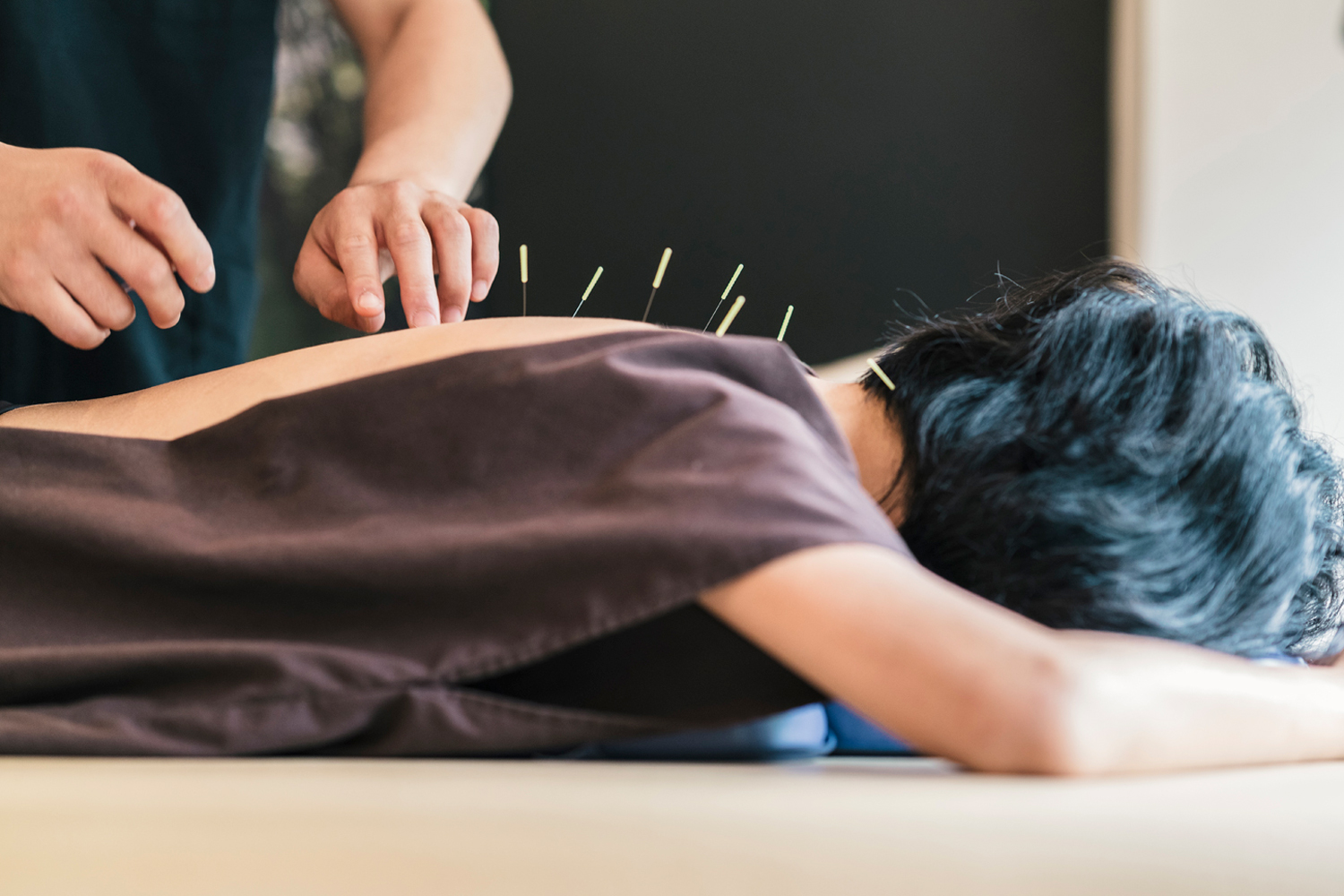IN SEPTEMBER 2022, THE SOCIETY FOR INTEGRATIVE ONCOLOGY and the American Society of Clinical Oncology issued a guideline on integrative medicine for managing cancer-related pain, noting current evidence supports using acupuncture, among other practices. Acupuncture originated as a form of traditional Chinese medicine and involves inserting thin needles into the skin at specific points in the body, stimulating nerves, tissue and muscles to relieve pain.
Reviewing available evidence on a number of integrative approaches, the guideline panel noted that a moderate amount of evidence supports using acupuncture to treat general or musculoskeletal pain from any type of cancer, as well as joint pain in breast cancer patients taking aromatase inhibitors, a type of hormonal therapy.
The guideline also recommends acupuncture for helping patients manage postoperative pain and chemotherapy-induced peripheral neuropathy, a type of nerve damage that can cause pain and tingling in the hands and feet, but notes the quality of evidence is weaker.
Oncology acupuncturists are specially trained to work with people with cancer.
Acupuncture poses few risks for people with cancer, but they should see an oncology acupuncturist. “It’s important from a safety perspective to see an acupuncturist with training and experience in the oncology setting,” says oncology acupuncturist Jonathan Siman of the Fred Hutchinson Cancer Center in Seattle. These specialists are trained to deal with patients who may have surgical drains in place or be at increased risk of infection or bleeding.
Jonathan Siman, an oncology acupuncturist and manager of the integrative medicine program at the Fred Hutchinson Cancer Center in Seattle, says he uses acupuncture to help cancer patients manage nausea and vomiting, fatigue, headache, anxiety, hot flashes from taking tamoxifen for breast cancer, and constipation.
The guideline from the Society for Integrative Oncology and the American Society of Clinical Oncology provided a review of other integrative medicine approaches, recommending hypnosis for treatment-related pain and massage for pain during palliative or hospice care. And although the panel didn’t find high-quality evidence to support yoga and music therapy, it notes research suggests the benefits outweigh the risks in certain cancer care situations.
Patients new to acupuncture may be hesitant at first, but it’s safe, Siman says; side effects may include soreness or minor bleeding and occasional bruising at the insertion sites. Siman stresses that acupuncture isn’t painful. “Most patients don’t feel much at all when the needle is inserted,” and are “surprised by how little it hurts,” he says. Certain acupuncture points may elicit a “dull achy sensation.” The needles stay inserted for about a half hour at a time. It may take a few sessions to begin to feel benefits from acupuncture, but not everyone will respond to it, Siman adds.
Cancer Today magazine is free to cancer patients, survivors and caregivers who live in the U.S. Subscribe here to receive four issues per year.





